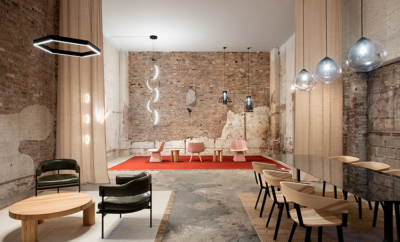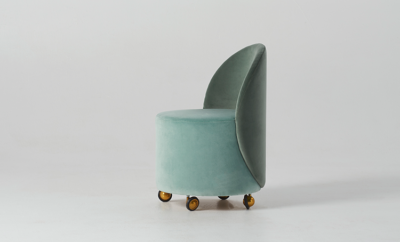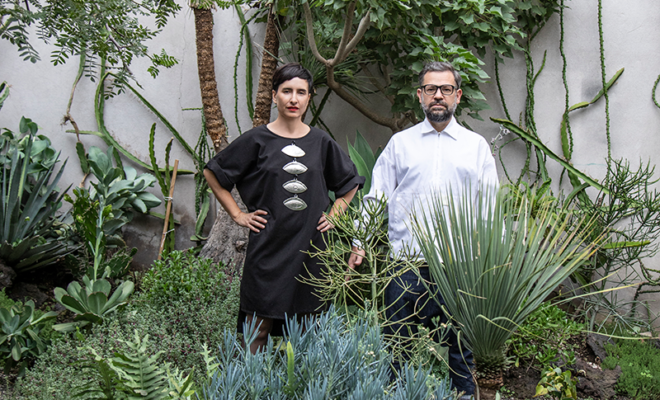 Pedro Reyes and Carla Fernández. Ana Hop photo.
Pedro Reyes and Carla Fernández. Ana Hop photo.
Design
Helping Hands
YOU WILL SEE THEIR CREDOS EMBLAZONED ON JUST about everything related to this year’s Design Miami fair, from the invitations to the walls of the exhibition pavilion. “In true luxury there is no oppression,” reads one maxim. Another proclaims: “The future is handmade.” Design Miami has presented its Visionary Award since 2005, but no one has deserved that description more than 2018’s recipients. Mexican artist and designer Pedro Reyes and his wife, fashion designer Carla Fernández, are on a mission to save whole swaths of humanity from irrelevance due to automation. The two work separately, but share a common purpose with their design projects, explains Reyes: “From conception to marketing, our goal is to create value for pieces that are handmade. It’s not only a romantic idea, it’s also a way to ensure that people who choose these professions will be safe from the destructive waves that automation is going to bring to society.”
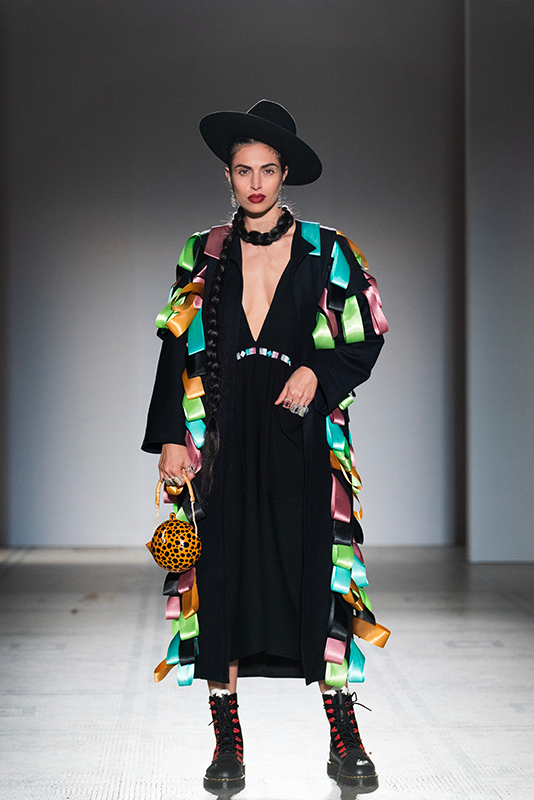
One of Fernández’s looks from the Fashion in Motion catwalk at the Victoria and Albert Museum in London, 2018. © Victoria and Albert Museum, London.
Fernández has been at the forefront of ethical and sustainable fashion design since her brand was formed in 2000. Her holistic business model places fairness at its core, informed by a belief in the social and economic possibilities of craft. Her designs take as starting points ancient Mexican textile techniques, and pieces are made in close collaboration with indigenous artisans, challenging assumptions that their methods are anachronistic in the era of fast fashion. Fernández’s designs also take formal inspiration from the geometric patterns found in traditional styles of dress.
Reyes’s artworks investigate the cultural and political histories of objects, and take forms as diverse as puppet shows, installations, and sculptures in materials like volcanic stone, terracotta, and bronze. Among his best known projects is Disarm (2013), in which he transformed confiscated firearms into musical instruments. Hands frequently appear in both his art and in designs like the Mano chair—which has a seat made of articulated wooden “fingers” that can be moved to mimic gestures, and turn the chair into a piece of sculpture when it’s not being used as a seat.
Both he and Fernández “are constantly looking for new elements to include in our design toolbox. Some of these tools may be philosophical ones that deal with issues of social justice,” Reyes says. “Others are very formal, and may have to do with moments of modernism, folk art, pre-Columbian art, so we nurture ourselves from the same references.”
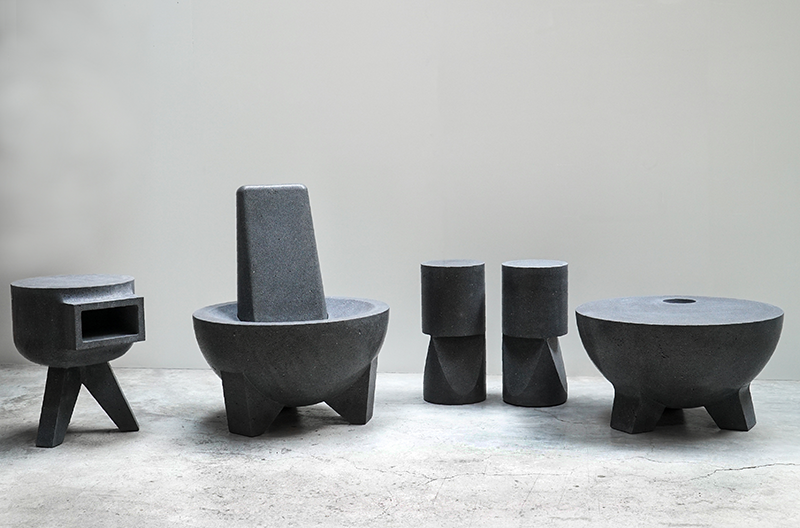
Volcanic stone furniture by Pedro Reyes, 2018. Courtesy of Pedro Reyes.
Design Miami features a retrospective exhibition of design works by the pair, including textiles by Fernández and instruments and furniture by Reyes. They collaborated on the graphic “identity” for the fair, creating illustrations and items like the invitations mentioned previously that pay homage to the distinctly ad hoc aesthetic of the posters and placards carried or displayed in the widespread protests that marked 1968.
They hope their message is heard. “For us it is important to show that the political borders we know today are only two hundred years old in comparison to a continent that has been inhabited for at least eleven thousand years,” Reyes says. “Our goal is to bring some perspective to a time when xenophobia and racism are increasing, and when, looking ahead, we are going to have ever increasing migration. On the other hand, we also want to show that many of these indigenous cultures continue to exist, and that in contrast to these original settlers, we are all immigrants.”


